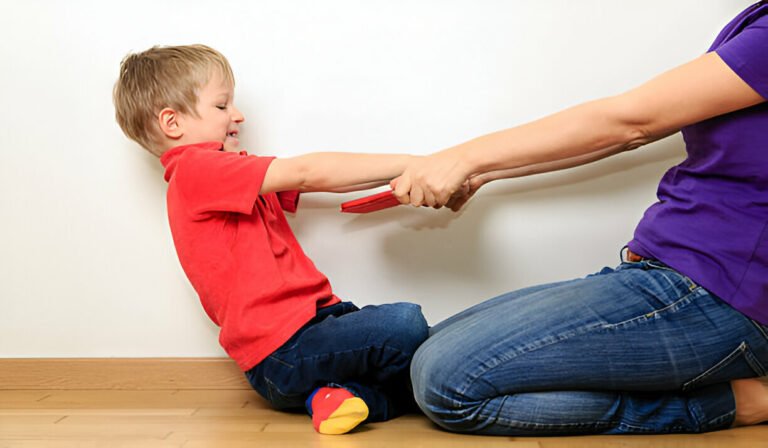Baby Rolling Over: essential Safety Tips for Parents

Watching your baby reach the milestone of rolling over for the first time is a proud and exciting moment. It’s one of the earliest physical accomplishments that signifies development and growing strength. However, as exciting as it is, rolling over also introduces new safety considerations for parents to keep in mind.
This blog will guide you through everything you need to know about this important milestone—from when to expect your baby to roll over to creating a safe environment and encouraging their progress.
When Do Babies Start Rolling Over?
Most babies begin to roll over between 4 and 6 months of age. However, the exact timing can vary as every baby develops at their own pace. Some little ones might surprise you as early as 3 months, while others may take a little longer to reach this milestone.
It’s worth noting that babies tend to first roll from their tummy to their back, as this requires less strength. Rolling from their back to their tummy often comes a bit later as it demands stronger neck and upper body muscles.
If your baby hasn’t begun rolling over by 6 months, it’s a good idea to discuss this with your pediatrician. Regular checkups are a helpful opportunity to track your baby’s developmental progress.
Development Stages of Rolling Over

The process of rolling over doesn’t happen overnight. It’s the result of weeks of growth and developing motor skills. Here’s what you can expect step by step:
1. Strengthening Tummy Time
Babies first build the necessary muscles during tummy time. Regular tummy time encourages core, arm, and neck muscle strength, all of which are essential for rolling over.
2. Wiggles and Shifting Weight
Around 3 months, you may notice your baby shifting their weight or wiggling their body while lying on their tummy or back. These motions are the early attempts at rolling.
3. The First Roll
Between 4 and 6 months, the big moment arrives. Your baby will manage their first successful roll, usually tummy to back first. These movements are often unintentional at first but quickly become purposeful with practice.
4. Back to Tummy Rolls
Rolling from back to tummy happens later, typically a few weeks to a month after their initial tummy-to-back roll. At this stage, you’ll want to start paying extra attention to safety.
Creating a Safe Environment for Your Rolling Baby
Now that your baby is on the move, even if it’s just rolling, their environment needs to be ready for their newfound mobility. Here are some critical safety measures to take:
- Use a Firm Mattress: If your baby rolls over during sleep, they need a firm, flat mattress to minimize the risk of suffocation. Avoid soft surfaces like memory foam or plush bedding.
- Clear the Crib: Remove pillows, blankets, and stuffed animals from the crib. A bare crib is the safest sleeping space for your baby.
- Floor Play Is Best: When supervising playtime, place your baby on a safe and flat surface like a play mat or carpet. Avoid elevated surfaces like beds or sofas to prevent rolling accidents.
- Baby-Proof Early: Rolling is one of the first steps toward mobility, so it’s never too soon to baby-proof your space. Secure furniture, cover electrical outlets, and remove hazardous items from their reach.
Baby Products to Avoid
Not all baby products are designed with development in mind. Some can unintentionally hinder your child’s progress toward rolling. Take caution with the following items:
- Bumbo Seats: While convenient, Bumbo seats can limit your baby’s natural movement and development of core strength needed for rolling.
- Infant Walkers: Walkers may seem like a helpful tool, but they often restrict your baby’s natural process of building strength and coordination.
- Overly Padded Play Surfaces: While soft surfaces seem safe, too much padding can make it harder for your baby to practice rolling and shifting their weight effectively.
Instead, give your baby plenty of supervised, unrestricted time on a safe, flat surface like a play mat.
How to Encourage Your Baby to Roll Over

There are several fun and simple ways to encourage your baby to roll over. Here are a few techniques to try:
- Tummy Time Fun
Make tummy time engaging by placing colorful toys or mirrors just out of their reach. This naturally encourages them to strengthen their muscles and practice rolling toward the object.
- Side-Lying Position
Help your baby lay on their side for short periods and give them gentle support to stay balanced. This position bridges the gap between lying flat and rolling.
- Cheer Them On
Even simple encouragement can make a difference! Smile, clap, and use an excited voice when they make attempts to roll. Babies respond well to positive reinforcement.
- Demonstrate the Way
Babies learn by watching, so gently show your baby how to roll by guiding their movements. For example, you can help them shift their hips or roll their shoulders to demonstrate the process.
Common Concerns About Rolling Over
Many parents have questions and concerns about this milestone. Below are answers to common queries to put your mind at ease:
My baby rolled over during sleep. Is this safe?
Once your baby demonstrates the ability to roll over both ways (tummy to back and back to tummy), there’s no need to reposition them during sleep. It’s important, however, to always place your baby on their back to sleep until they can roll on their own.
My baby hates tummy time. What should I do?
It’s normal for babies to resist tummy time at first. Start with short sessions (a minute or two) and gradually increase the time as they get stronger. Lying down beside them during tummy time can also make the experience more enjoyable.
Should I stop swaddling my baby?
Yes, once your baby begins to show signs of rolling over, it’s time to transition out of swaddling. They need the freedom to move their arms for safety reasons.
Celebrate the Milestone and What Comes Next
Rolling over is an exciting step in your baby’s development, and it’s just the beginning of their mobility journey! Next up, you’ll see them learning to sit, crawl, and explore even more.
Enjoy the moments, take plenty of pictures, and keep your baby safe as they practice this new skill. Before you know it, you’ll be chasing after them as they crawl across the room!
For more parenting tips and safety guidelines, check out our full library of resources. Every step of the way, we’re here to support you on this incredible parenting adventure.






